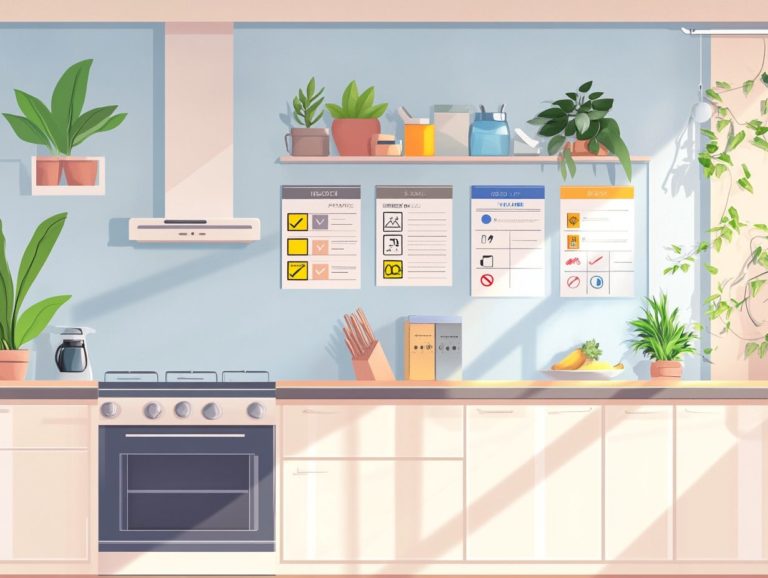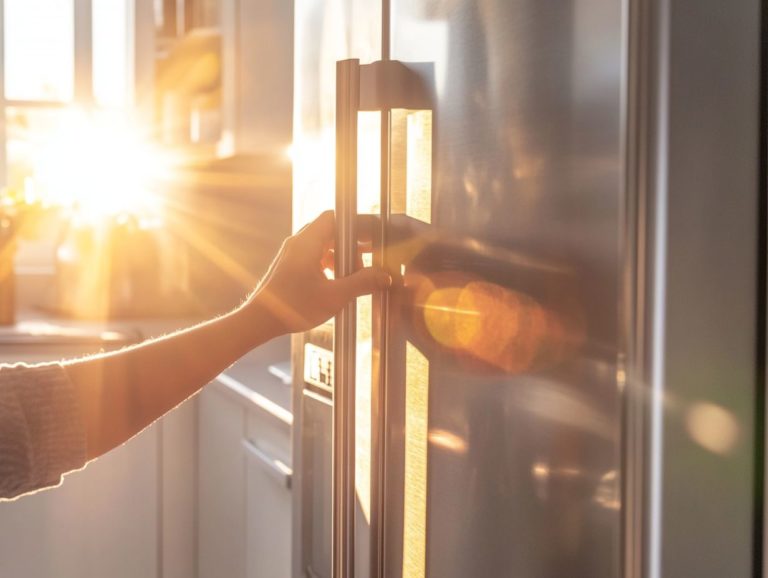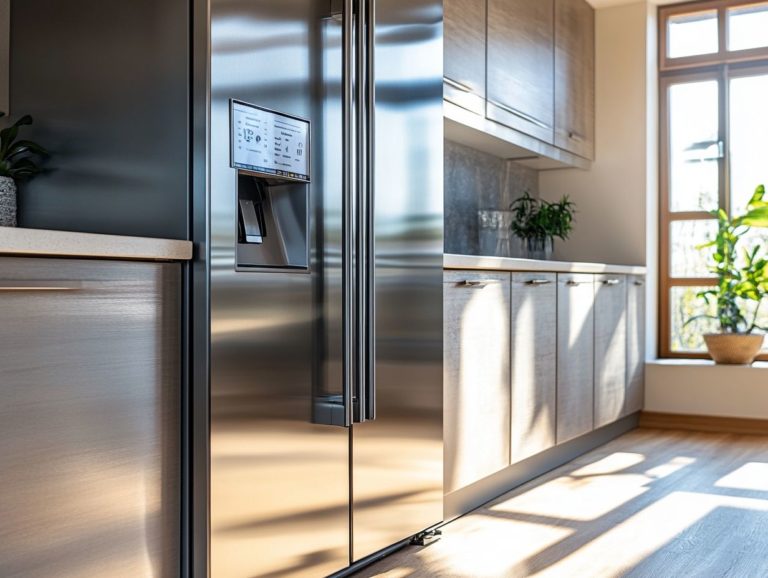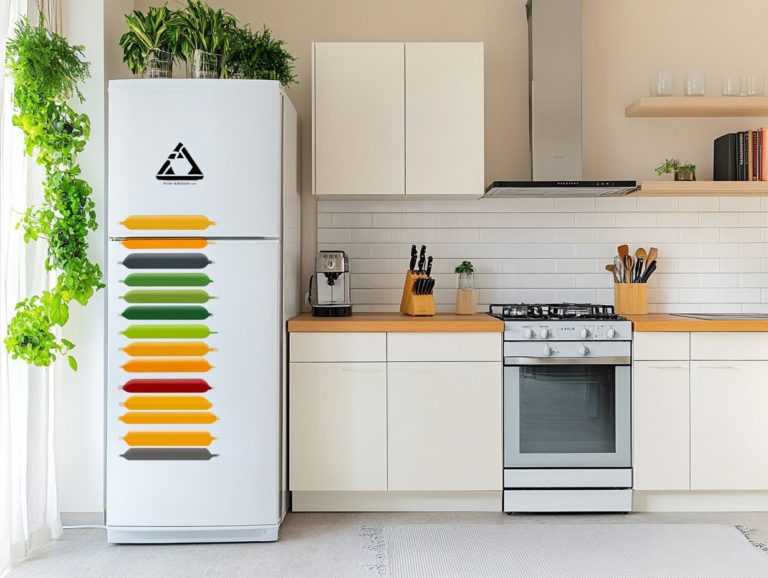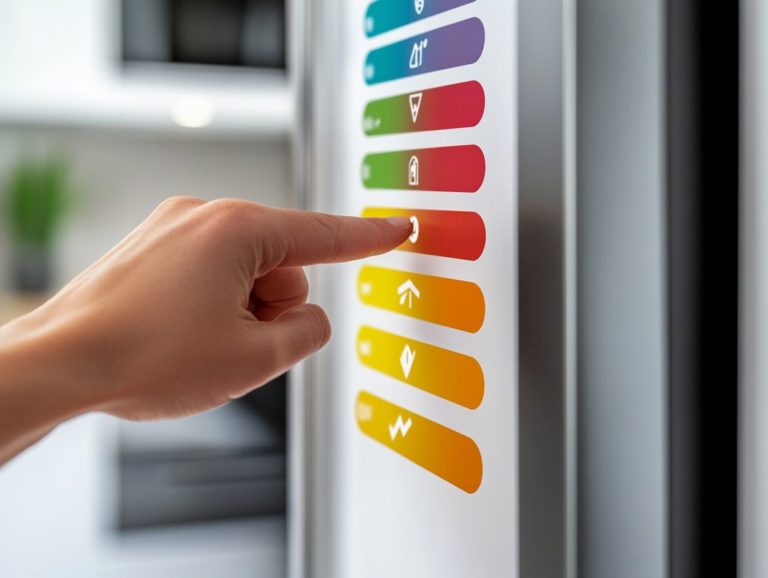10 Tips for Reducing Energy Consumption at Home
In today’s world, reducing energy consumption at home isn’t just about saving money. It’s a chance to positively impact the environment.
With a few simple changes to your daily habits, you can cut down on energy use and lower those pesky bills.
Get ready to discover ten game-changing tips, from turning off lights to investing in energy-efficient appliances.
Each tip helps you make small changes that lead to big savings. Explore how to create a more sustainable and cost-effective home!
Contents
- Key Takeaways:
- 1. Turn Off Lights and Unplug Electronics
- 2. Use Energy-Efficient Light Bulbs
- 3. Install a Smart Thermostat
- 4. Wash Clothes in Cold Water
- 5. Use Natural Light as Much as Possible
- 6. Invest in Energy-Efficient Appliances
- 7. Use a Power Strip for Electronics
- 8. Insulate Your Home Properly
- 9. Plant Trees for Natural Shade
- 10. Use Energy-Efficient Window Coverings
- How Much Can You Save by Reducing Energy Consumption?
- Frequently Asked Questions
- What are some easy ways to reduce energy consumption at home?
- Want to save energy with your thermostat? Here s how!
- What are some energy-efficient practices for doing laundry?
- How can I make my kitchen more energy-efficient?
- What are some tips for reducing energy consumption while using electronics?
- Is it important to maintain my appliances for energy efficiency?
Key Takeaways:
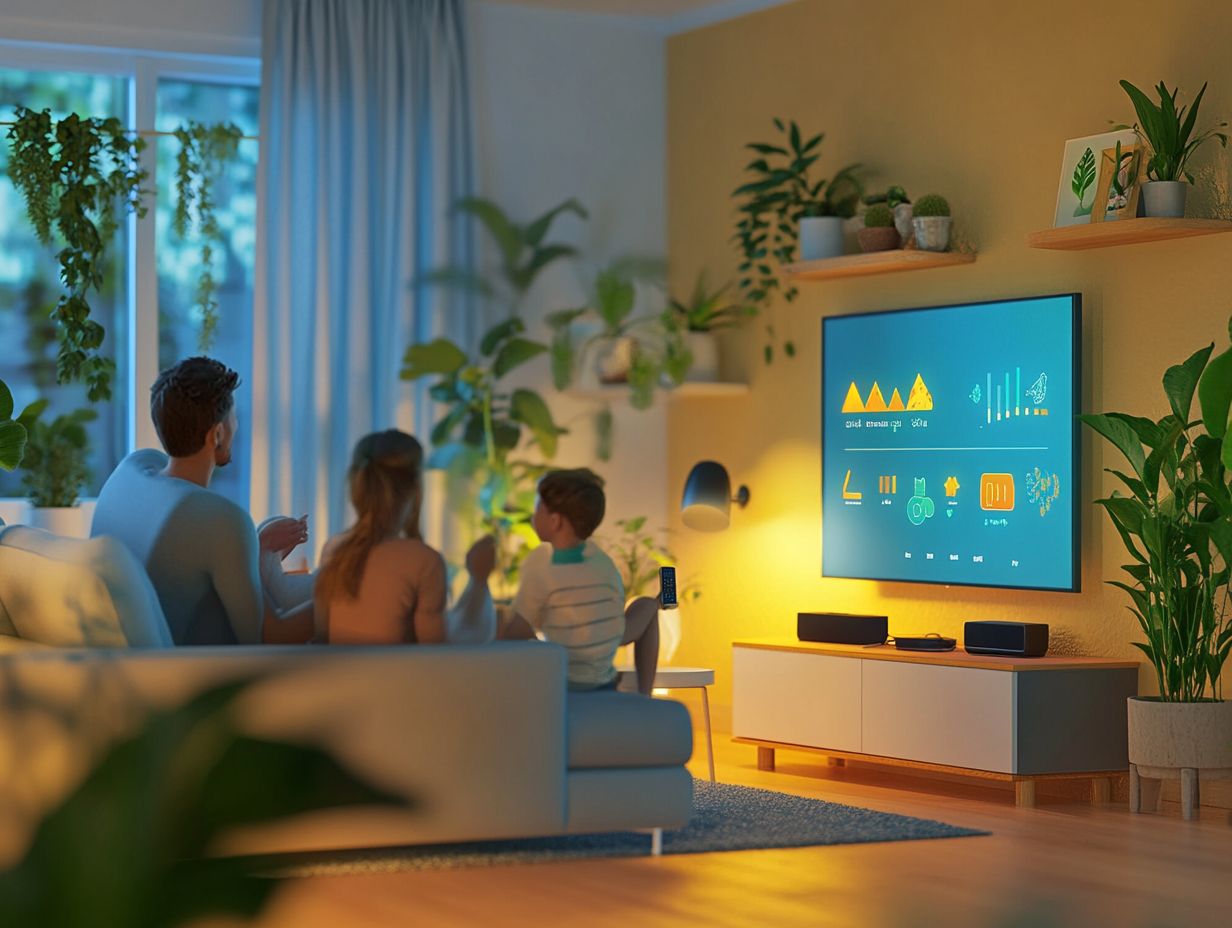
- Unplug electronics when not in use to save energy and money.
- Invest in energy-efficient appliances and light bulbs to reduce consumption.
- Track energy usage and make small changes for significant savings.
1. Turn Off Lights and Unplug Electronics
Turn off lights and unplug electronics when they’re not in use. This is a simple yet effective way to reduce energy consumption and can align with 5 vital energy-saving measures to implement.
This practice fights “vampire energy,” the electricity wasted by devices in standby mode. Many household electronics, like chargers and TVs, still use power when off, inflating your bills.
Check the devices plugged into your outlets. Consider using smart power strips that cut off power when devices aren t in use. Smart plugs also help you control your energy use better.
2. Use Energy-Efficient Light Bulbs
Switch to energy-efficient bulbs like LEDs to save money and support a sustainable lifestyle. These bulbs last up to 25 times longer than traditional incandescent ones.
Choosing LED technology helps reduce your carbon footprint. Plus, the savings on your electricity bills make the switch even more worthwhile!
3. Install a Smart Thermostat
Installing a smart thermostat can transform your home’s heating and cooling systems. These devices give you precise control, enhancing energy savings.
They adjust temperatures based on your schedule, cutting down on wasted energy. Many homeowners save up to 20% on their utility bills with these devices!
Controlling your thermostat via a smartphone app allows you to make adjustments on the go. You can return to a comfortable home every time!
4. Wash Clothes in Cold Water
Washing clothes in cold water is a great energy-saving strategy. It reduces the strain on your water heater and helps lower your energy bills.
Cold water cycles save about 70% of the energy usually needed to heat water. This simple switch helps lessen the load on the power grid and lowers greenhouse gas emissions.
Modern washing machines are designed for cold water washes, ensuring a thorough clean without high energy costs. Brands like Energy Star and LG offer models that support these conservation practices.
5. Use Natural Light as Much as Possible
Using natural light is a great way to save energy. It makes your home feel brighter and more welcoming.
By adding windows or skylights, you can enjoy sunlight all day and rely less on electric lights. Opting for lighter-colored furnishings and walls helps reflect that glorious sunlight, amplifying its benefits.
Thoughtful design choices, such as choosing energy-efficient windows, help reduce heat gain during warmer months.
This allows you to enjoy a cooler indoor climate while fully embracing the warmth of natural light.
6. Invest in Energy-Efficient Appliances

Buying energy-efficient appliances is an important step for your home. They help you save money and the planet.
These devices use less electricity and water, making them a smart choice. Look for the ENERGY STAR label, which shows that the appliance uses less energy.
Upgrading leads to lower utility bills and a smaller carbon footprint. Each purchase helps conserve natural resources and fosters a healthier living atmosphere.
Investing now means greater savings and a better planet for you and future generations!
7. Use a Power Strip for Electronics
A smart power strip helps cut off power to electronics when they’re not in use. This simple tool saves energy effortlessly.
These devices automatically disconnect power when electronics enter standby mode, reducing energy waste.
Some smart power strips even have sensors that detect inactivity, turning off power to devices like printers and gaming consoles.
With added features like surge protection and convenient USB ports, smart power strips promote sustainable habits. They are an intelligent choice for optimizing energy usage.
8. Insulate Your Home Properly
Good insulation is key for energy savings. It keeps your home comfortable and lowers your energy bills.
There are various types of insulation materials, like fiberglass, foam, and cellulose, each with unique advantages for different areas of your home.
Effective insulation enhances the comfort of your living spaces and brings long-lasting benefits, including lower utility bills.
By investing in quality insulation, you contribute to a more sustainable lifestyle while lowering the carbon footprint associated with energy production.
Improving energy efficiency helps conserve natural resources and fosters a healthier environment for future generations.
9. Plant Trees for Natural Shade
Planting trees for natural shade is an astute landscaping choice that can dramatically lessen heat gain in your home. This aids in energy conservation and lowers cooling costs during sweltering months.
By thoughtfully placing tall, leafy trees on the southern and western sides of your property, you can craft inviting cool zones. These zones protect your living spaces from harsh sunlight, boosting your comfort and reducing reliance on air conditioning.
Selecting the right tree species that require minimal maintenance yields a multitude of benefits. These include enhanced air quality and visual appeal. It’s crucial to choose native trees well-adapted to your climate, ensuring they provide optimal shading without obstructing views or interfering with existing structures.
10. Use Energy-Efficient Window Coverings
Implementing energy-efficient window coverings, such as double glazing and thermal curtains, significantly enhances your energy conservation efforts. These solutions reduce heat loss and elevate your home’s overall energy efficiency.
These coverings act as barriers to external temperatures and play a crucial role in creating a more comfortable indoor environment. Options like cellular shades and roller blinds trap air, providing additional insulation when sealed correctly.
By integrating these solutions, you ll enjoy lower heating and cooling costs. You will also actively engage in broader energy-efficient practices that promote environmental sustainability.
When paired with proper insulation and energy-saving appliances, these window solutions profoundly diminish your household’s carbon footprint. This showcases your commitment to a greener future.
How Much Can You Save by Reducing Energy Consumption?
Reducing energy consumption saves you money on your energy bills while embracing a more sustainable lifestyle through energy-efficient practices and habits.
Incorporating simple yet effective changes, such as switching to LED lighting or investing in smart thermostats, can lead to noticeable reductions in your monthly expenses.
For example, a family of four could save up to $200 annually by minimizing unnecessary electricity usage and optimizing heating and cooling systems.
Adopting mindful habits, like unplugging devices when not in use or utilizing energy-efficient appliances, yields substantial benefits over time, especially for larger households with higher consumption rates. For more tips, check out this guide on how to make your home more energy efficient.
These steps can save you money today while encouraging a more eco-conscious lifestyle.
What Are the Benefits of Reducing Energy Consumption?

Reducing energy consumption brings a wealth of benefits:
- Enhanced energy conservation.
- Substantial savings on your energy bills.
- A positive impact on the environment through sustainable practices.
This approach plays a significant role in decreasing your carbon footprint. For example, for every kilowatt-hour of electricity saved, approximately 0.4 kilograms of CO2 emissions are avoided, contributing to a greener planet.
Adopting energy-efficient measures like switching to LED lighting or optimizing heating systems trims expenses and helps preserve our delicate natural resources.
Studies indicate that increasing energy efficiency in homes and businesses can cut electricity demand by up to 20%. This collective effort yields economic advantages and cultivates a culture of sustainability, ensuring we protect our environment for future generations.
Start taking these energy-saving steps today!
How Can Small Changes Make a Big Difference?
Implementing small changes, like adopting practical tips for energy-efficient appliance use and energy-efficient practices, can lead to substantial reductions in energy consumption and enhance overall energy efficiency in your home.
These adjustments may seem minor. However, they can accumulate over time, resulting in notable savings on your energy bills.
For instance, consider swapping out traditional incandescent bulbs for LED lighting, which consumes a fraction of the energy. Unplugging devices that aren t in use or utilizing smart power strips can help you cut down on phantom energy draw.
Regularly maintaining your heating and cooling systems and sealing any drafts around windows and doors can further improve comfort while reducing energy use.
By integrating these small, actionable steps into your daily routine, such as following the top tips for maintaining energy-efficient appliances, you can achieve significant energy savings with minimal effort.
What Are the Most Energy-Consuming Appliances in a Home?
Identifying the most energy-consuming appliances in your home is essential. This understanding helps you grasp electricity usage patterns and make informed choices that encourage energy efficiency.
By recognizing the major culprits behind your energy bills like water heaters and heating and cooling systems you can take meaningful steps to reduce your carbon footprint. For example, upgrading to a high-efficiency water heater can yield significant savings. Additionally, replacing an outdated heating and cooling unit with a modern, energy-efficient model will help lower your energy costs over time.
Opting for a refrigerator that meets ENERGY STAR standards not only conserves electricity but also ensures your food stays fresh without unnecessary energy waste. Making these changes can significantly benefit both the environment and your budget!
How Can a Homeowner Track Their Energy Usage?
You can effectively track your energy usage through energy audits and the integration of smart devices. This allows for superior management of your consumption and identification of potential savings.
By engaging in a thorough energy audit, you can uncover hidden inefficiencies in your home, such as outdated appliances or insufficient insulation. Smart devices play a crucial role in this journey; they monitor your energy usage in real time, offering valuable insights into when and where your energy consumption peaks.
Leveraging apps designed for energy tracking can elevate your experience, enabling you to set goals, receive alerts about excessive usage, and analyze your consumption patterns over time.
These tools don t just raise awareness they empower you to make quick, informed decisions that slash your energy bills and protect our planet!
What Are the Common Myths About Energy Consumption?
Understanding the common myths surrounding energy consumption is crucial for you to effectively conserve energy and adopt sustainable practices that truly make a difference in reducing your energy use.
Many might think that simply unplugging devices when they re not in use will significantly lower their energy bills, but it s essential to consider the bigger picture. While unplugging does help, the actual savings can vary greatly depending on the devices and their standby power consumption.
On the other hand, energy-efficient appliances are often underestimated; some may believe these appliances are only marginally better than traditional ones, but in reality, they can lead to substantial savings over time.
By debunking these misconceptions, you can make more informed choices about your energy habits, ultimately contributing to a more sustainable future.
Frequently Asked Questions
What are some easy ways to reduce energy consumption at home?

Some easy ways to reduce energy consumption at home include:
- Turning off lights and electronics when not in use.
- Using energy-efficient light bulbs.
- Unplugging chargers when not in use.
Want to save energy with your thermostat? Here s how!
You can save energy by setting your thermostat a few degrees lower in the winter and a few degrees higher in the summer. Additionally, using a programmable thermostat can help regulate temperatures when you are not at home.
What are some energy-efficient practices for doing laundry?
Wash your clothes in cold water instead of hot. Air dry them whenever you can and always do full loads. These simple steps can save energy and cut costs!
How can I make my kitchen more energy-efficient?
Use the dishwasher only when it’s full to save water and energy. Cooking with lids on pots helps food cook faster, and using the microwave can save energy compared to using the oven.
What are some tips for reducing energy consumption while using electronics?
Turn off devices when you re not using them. Unplug chargers and use power strips to switch off multiple electronics easily.
Is it important to maintain my appliances for energy efficiency?
Yes! Regular maintenance keeps your appliances running smoothly. Clean or replace air filters, check for leaks, and get professional help when needed.

